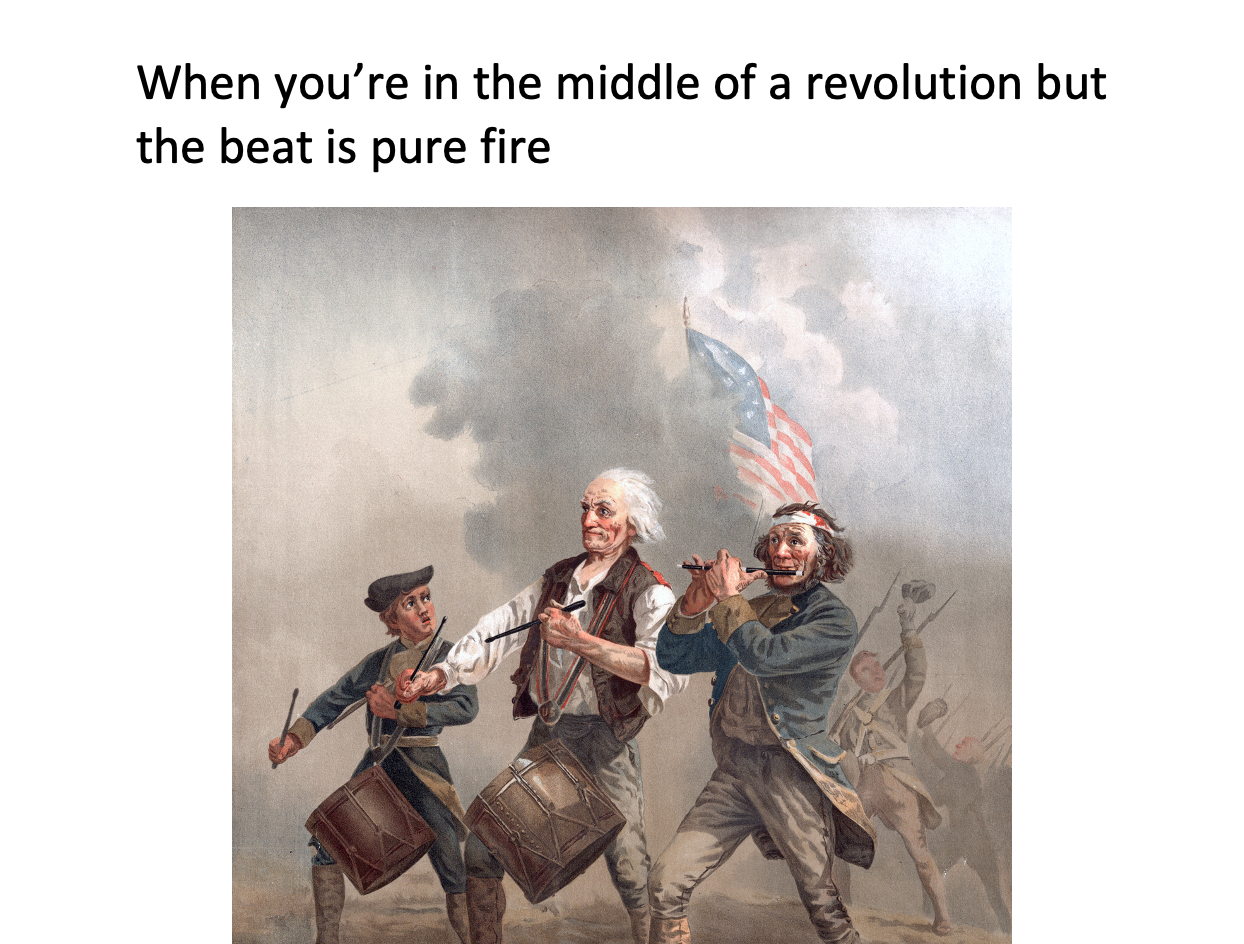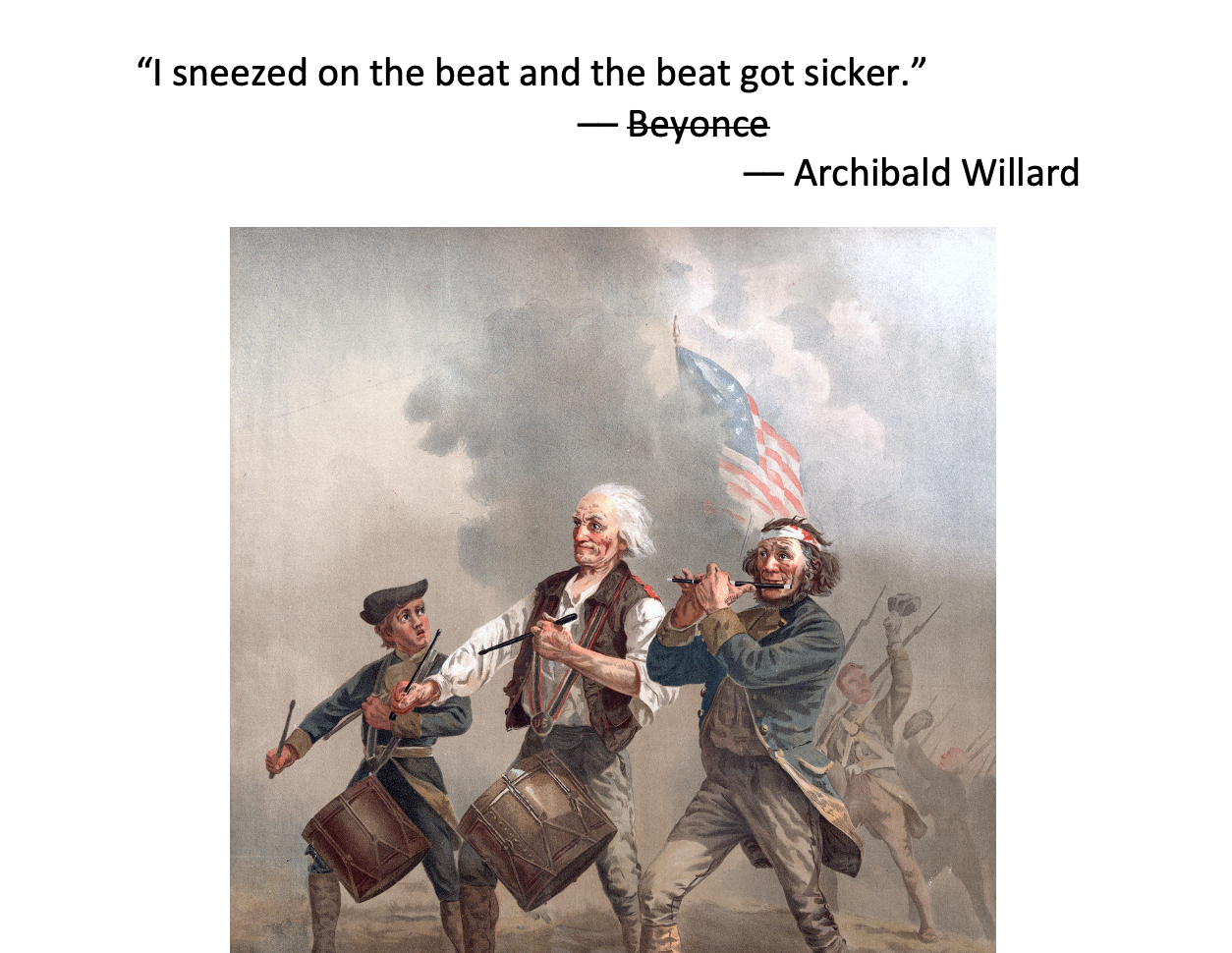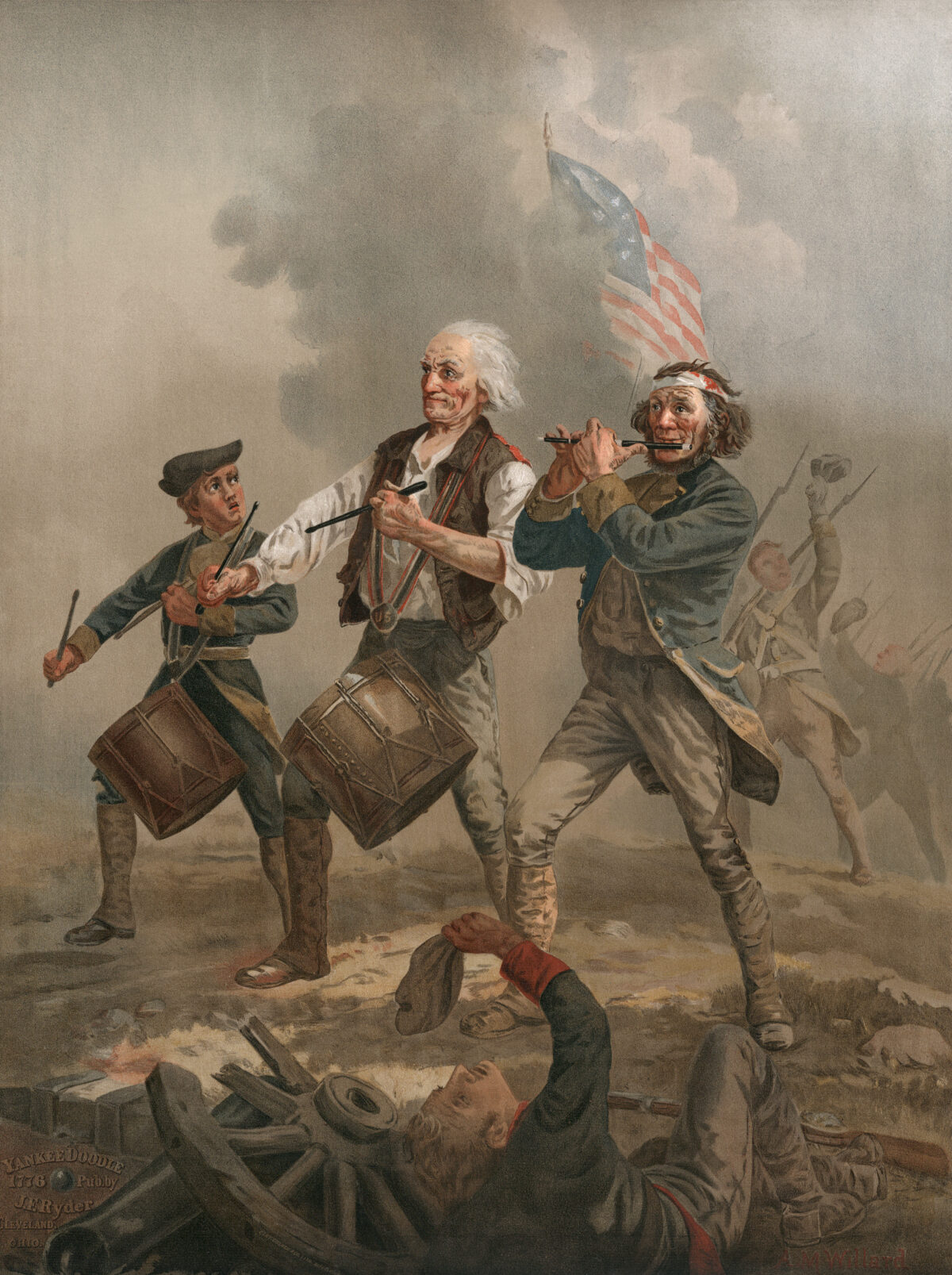In what was once dubbed the world’s “…most inspiring patriotic painting” “The Spirit of ’76” has enthralled a new generation — this time as a meme.
Painted by Civil War veteran Archibald Willard, “The Spirit of ’76” originally “started out as a simple sketch of three Wellingtonians goofing around in the town square,” according to The Spirit of ’76 Museum.
The three Ohio natives were all veterans of the War of 1812 and had imbibed several adult beverages that afternoon before taking to the square to goof around and create mock battles — as one does. Upon witnessing their drunken fun, Willard began to sketch the scene unfolding before him.

Willard intended the drawing to be a comedic sketch, but on the advice of friend and famed photographer James F. Ryder, the artist imbued his next iteration of the painting with some good old red, white, and blue patriotism.
Despite his efforts for a patriotic hue, Willard’s unique sense of humor certainly crept in, and the infinitely meme-able “The Spirit of ’76” was born.
“Hello yes, we’re are here to slaughter each other,” one meme goes, “but before that my boy Nathaniel’s gonna drop a sick a** beat on y’all. Show ‘em how it’s done Nat.”
Another one writes, “When you’re in the middle of a Revolution but the beat is pure fire.”
Despite what now seems like a ludicrous military role due to modern technology, drummer boys played an integral part of battle during the American Revolution and Civil War.
“Drumbeats governed Civil War soldiers,” writes America’s Civil War magazine’s senior editor Nancy Tappan. “Over the din of the battlefield, drum calls were used to transmit commands—the long roll, for instance, was the signal to fall in under arms. In camp, drummers summoned the regiment to meals, to muster, drill, and sick call. When on the march, drummers kept up a lively cadence to boost men’s morale.”
During the Revolutionary war, “Most of the musicians would have been boys that were too young to fight in the war but were following their fathers who were fighting,” according to the United States Army Old Guard Fife and Drums Corps. “Other musicians could have been men who were too old to fight. This meant that males that were younger than 16 or older than 50 could serve as musicians in the army.”

Similarly, during the Civil War the drummers oftentimes came in the size of pint-sized heroes. While regular soldiers had to be at least 21, or 18 if they had parental consent to enlist in the Civil War, noncombatant musicians could enlist at 12.
One drummer, Orion P. Howe, is among the youngest recipients of the Medal of Honor for his actions at Vicksburg. According to the citation, ““A drummer boy, 14 years of age, and severely wounded and exposed to a heavy fire from the enemy, he persistently remained upon the field of battle until he had reported to Gen. W.T. Sherman the necessity of supplying cartridges for the use of troops under command of Colonel Malmborg.”
Exhibited at the Centennial Exposition in Philadelphia in 1876, the final version of Willard’s painting used the faces of the artists’ father for the central drummer; a former soldier-turned-farmer named Hugh Mosher for the fifer; and modeled the young drummer after Henry K. Devereux, the son of General John H. Devereux, according to Marblehead.org.
Despite the painting originally being met with a tepid response from critics, it was sent on tour to several major cities around the U.S. and garnered an enthusiastic reaction from the public at large.
“The Spirit of ’76” was later sold to General Devereux, who took it to his home in Marblehead, Massachusetts. It has remained there ever since, just waiting for the internet to rediscover it.





